Rafflesia
speciosa Barcelona and Fernando
In 2002 a Rafflesia was seen blooming on the island of Panay,
Antique Province, Sibalom Natural Park (SNP) near the town of Sibalom.
Sightings were also reported from the adjacent town of San Remegio and
nearby barangays at the Antique-Iloilo border. Up to this point in time, two
species of Rafflesia had been described from the Philippine islands:
R. manillana, originally named
Teschemacher in 1842 from a population on the island of Leyte (Basey), and R.
schadenbergiana described by Göppert in 1885 from Mindanao (Mt.
Apo). The name R. manillana now applies only to the Samar species
whereas all the Rafflesia from Luzon that were thought to be
conspecific with it are now referred to as R.
lagascae (Barcelona et al. 2009). These two species are easily
distinguished from each other because R. manillana has a smal (15-20
cm diameter) flower whereas R. schadenbergiana has a large flower
(80 cm diam.). So what was the identity of the Rafflesia from
Panay Island that was discovered by members of The Antique Outdoors (TAO), a
conservation group in the province of Antique, Panay Island? They contacted
Dr. Julie Barcelona, a botanist with the Philippine National Herbarium (PNH)
who together with Dr. Edwino S.Fernando named this new species Rafflesia
speciosa (Barcelona and Fernando 2002). The photographs shown below
were taken by Albert Mamora, Julie Barcelona and members of TAO.
Since it discovery, additional field work has shown that Rafflesia
speciosa is present in numerous populations of the Central Panay
Mountain Range. Furthermore, the species is also known from the Kanlaon
volcano on Northern Negros Island (Barcelona et al. 2009). This
distribution pattern is unusual for Philippine Rafflesia where
most species are confined to single islands. That said, these two islands
were contiguous during the late Pleistocene when sea levels were lower. A
conservation genetic study using microsatellites was conducted on nine
populations of R. speciosa (Pelser et al. 2018). The populations
on Panay have higher genetic variation than on Negros and it appears that
the Guimaras Strait between the islands has imposed a barrier to gene flow
between the island populations. Because of the unique genetic diversity
contained within these separate populations, they are significant from a
conservation standpoint and legal protection was proposed.
References
Barcelona JF, Fernando ES. 2002. A new species of Rafflesia
(Rafflesiaceae) from Panay Island, Philippines. Kew Bulletin 57:647-651.
Barcelona JF, Pelser PB, Balete DS, Co LL. 2009. Taxonomy, ecology, and
conservation status of Philippine Rafflesia (Rafflesiaceae).
Blumea 54:77-93.
Pelser PB, Nickrent DL, Barcelona JF. 2018. A conservation genetic study
of Rafflesia speciosa (Rafflesiaceae, Philippines): patterns of
genetic diversity and differentiation within and between islands. Blumea
63:93-101.
|
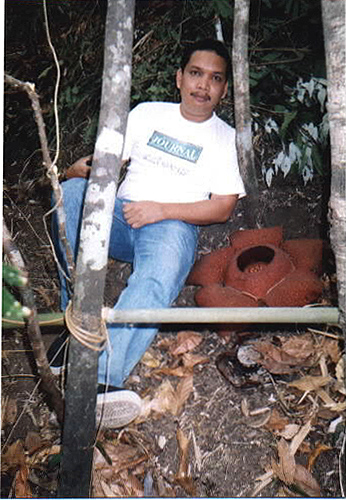
Albert Mamora Jr. posing with the flower of Rafflesia
speciosa.
|
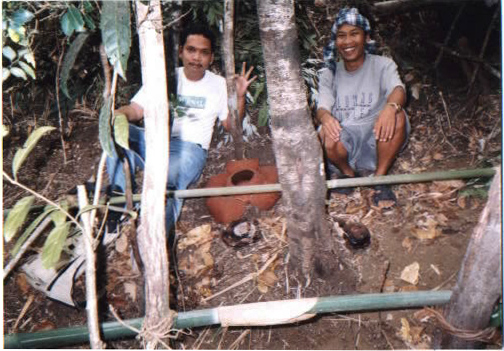
Albert Mamora and friend near the plants. Note the bamboo
exclosure placed around some of the buds.
|
|
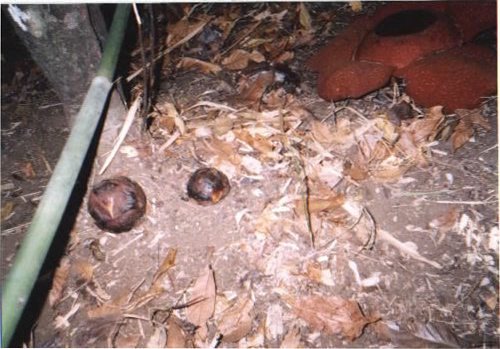
Close-up of the flower buds and an open flower in the background.
|
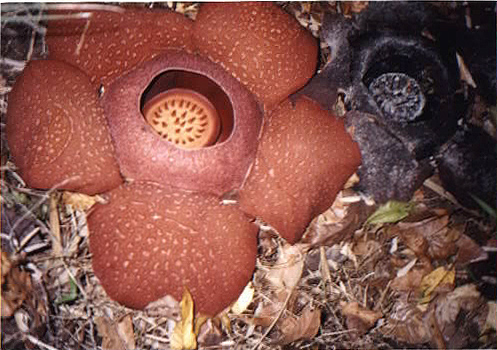
A fully opened flower and one that is senescing to the right.
|
|
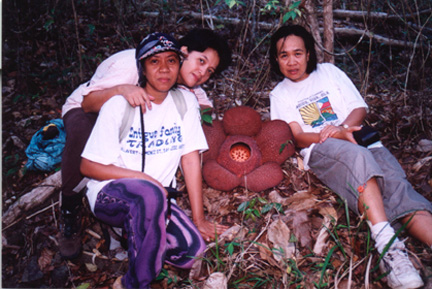
Julie Barcelona (center) and two members of The Antique Outdoors
group posing with the flower of Rafflesia speciosa.
|
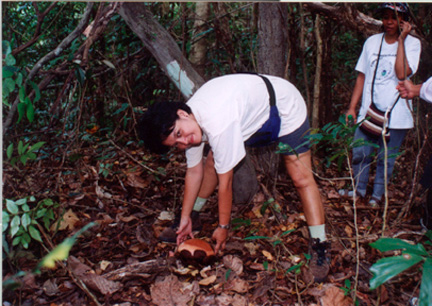
Julie Barcelona (for scale!) with a flower bud of R. speciosa.
|
|

Close-up of the flower bud of R. specios
|
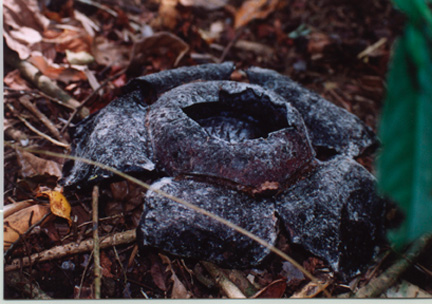
A senescent flower of R. speciosa. Hopefully there will
be some fruit production in these populations.
|
|
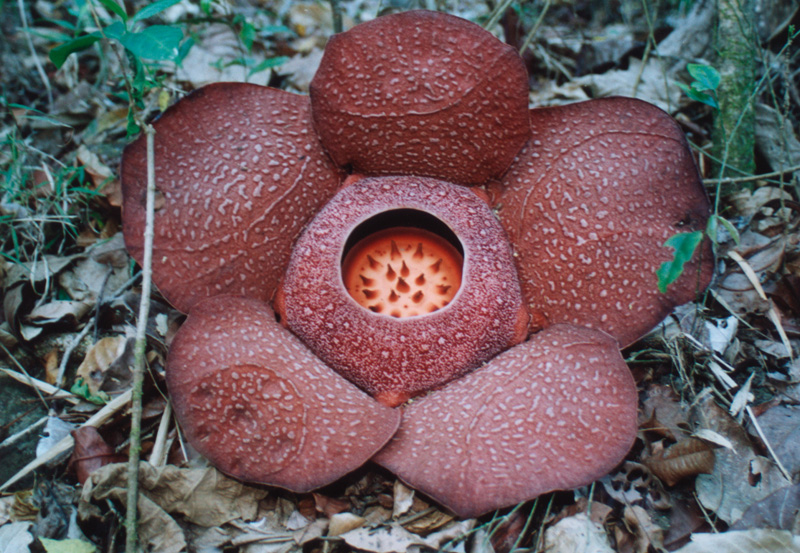
A fully opened flower of Rafflesia speciosa. Fantastic!
Julie notes that the markings on the perigone lobes look like Rice
Crispies!
|
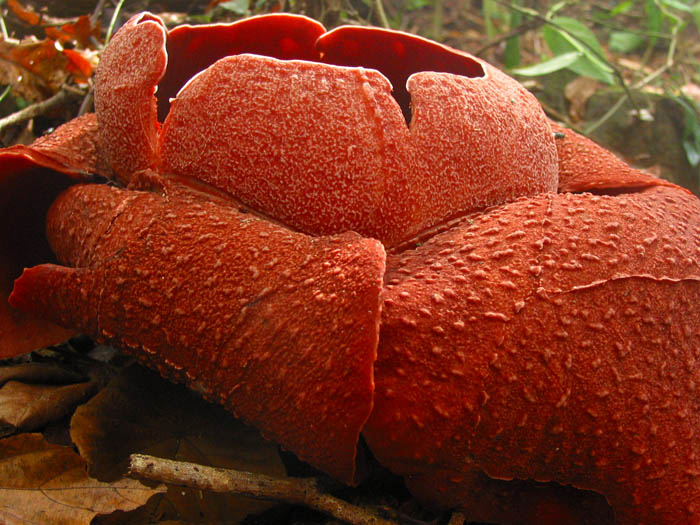
Valderrama municipality, Antique Province, Panay Island,
Philippines. 11.0000, 122.1333. Photo by Leonard Co. |
|
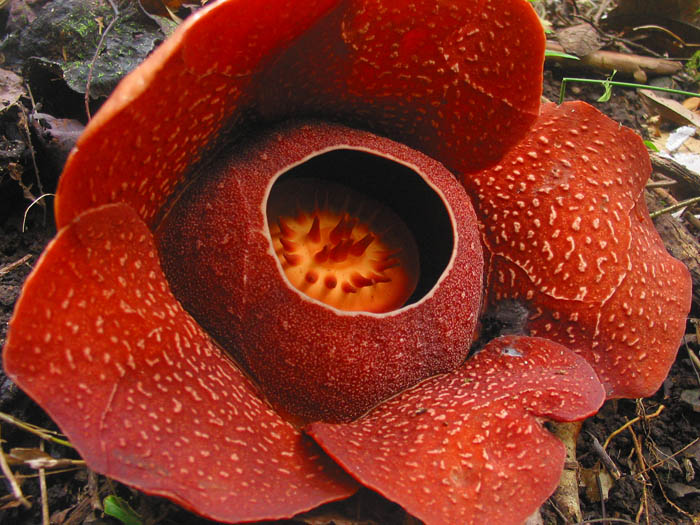
Valderrama municipality, Antique Province, Panay Island,
Philippines. 11.0000, 122.1333. Photo by Leonard Co. |
|
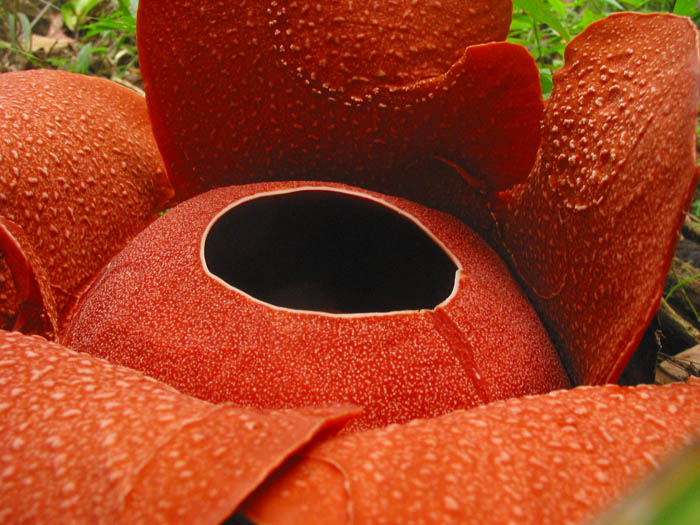
Valderrama municipality, Antique Province, Panay Island,
Philippines. 11.0000, 122.1333. Photo by Leonard Co. |
|
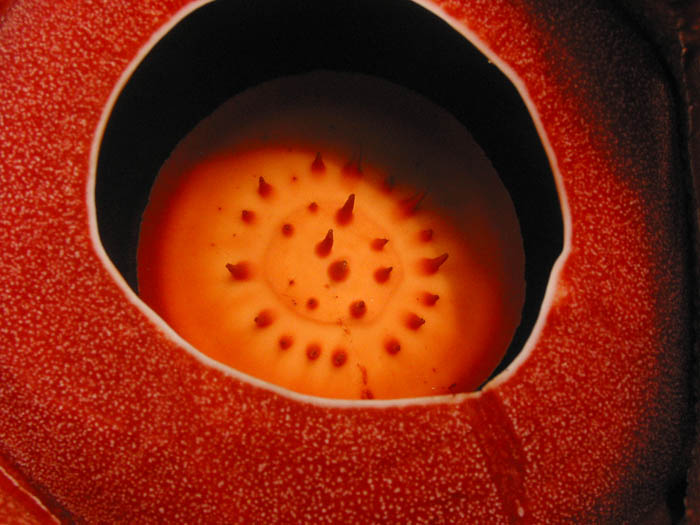
Valderrama municipality, Antique Province, Panay Island,
Philippines. 11.0000, 122.1333. Photo by Leonard Co |
|
Last updated: 12-Apr-19 / dln












